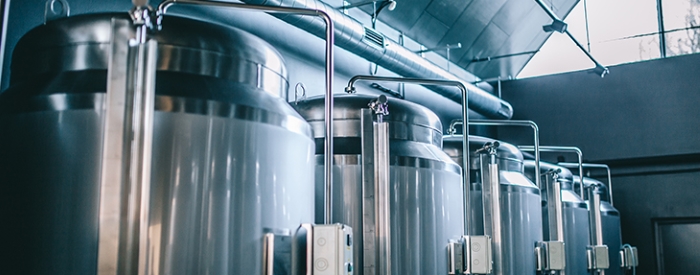up next Stacy Adams
Stacy Adams
Nebraska Hops Project
The Future of Hoppy Beer Is Brewing Right Here in Nebraska
October 2018
Come August in Nebraska, you can find 25-foot tall trellises heavy with lush greenery, dotted with freshly sprouted hops. You’ll also find Stacy Adams studying the quality of the green, pinecone-like blooms.
Adams, associate professor of practice in agronomy and horticulture at UNL, is leading the Nebraska Hops project. Launched in 2016 with a grant from the Nebraska Department of Agriculture, Adams and his team are testing the viability of eight hop varieties at five locations statewide.
By the year 2020, an estimated additional 11,000-11,500 acres of hops will be needed to meet the demands of the microbrewing industry.
Why the interest in hops? To help Nebraska producers generate a different kind of green—profit.
Hops are the star ingredient in brews like IPAs and pilsners, giving beers a distinctive bitter flavor and flowery aroma. By 2020, an estimated additional 11,000-11,500 acres of hops will be needed to meet the demands of the microbrewing industry. Thanks to the country’s taste for craft beers, hops are a high-value commodity with major profit potential for Nebraskan producers. And best of all, the soil and moisture conditions here are promising for hop growth—putting Nebraska in a strong position to meet industry demand.
Craft brewing in Nebraska directly impacts nearly 9,000 jobs and more than $235 million in wages for a total economic impact of $465 million.
In Nebraska alone, breweries have increased from 11 in 2006 to 42 in 2016, according to the Omaha World Herald. Nebraskan-grown breweries like Zipline Brewing Co, Kinkaider Brewing Co, Lucky Bucket and others have successfully planted roots in the state, becoming a new source of tax revenue. In 2016, the Nebraska craft brewing industry generated more than $80 million in state and local taxes. Craft brewing in Nebraska directly impacts nearly 9,000 jobs and more than $235 million in wages for a total economic impact of $465 million.
And all of that monetary potential could be spurred on by a bud that fits in the palm of your hand. Thanks to research like that run by Stacy Adams and the University of Nebraska—Lincoln, Nebraska is set to put its producers in the center of a thriving industry. Cheers to that.

Discover our Podcast Series
The “Leading Nebraska” podcast shares the stories of the researchers, students, teachers and others across the University of Nebraska's four campuses who are making an impact. From teachers and doctors to engineers and ag experts, these Nebraska leaders are touching lives and making a difference.
Sorry, no stories match your filters.
Please adjust your filters above to view more stories.
Find Your Nebraska State Senator
Get started by entering your address below. Next, you'll receive information on who your senator is—and how to reach him or her.
Making a call only takes a few minutes and sends a strong message to your state senator. Your senator may not be able to take the call, but you can speak to the legislative aide who works for the senator. They will log your call, take a message and pass it on. Keep your conversation brief, and be sure to cover these essential points:
- Introduce yourself as a constituent in their district and provide your name.
- Be clear that you're calling about your support for the University of Nebraska System.
- Share your story about how the University has impacted you or your family. A personal story is hard to ignore. Explain why it's important to you that your senator invests in the University of Nebraska. Again, keep it brief and to-the-point.
- Ask for your opinion to be noted. Politely finish the call by thanking the senator or legislative aide for their time.
Send an Email
Sending a written message to your state senator is an easy way to engage your representative. They're more concise and easier to respond to, and they're more likely to be viewed by the senator. If you can, send a personalized message with these essential points. Keep your message brief (a paragraph or so).
- Write a personal, attention-getting subject line that lets the senator know your topic— "Investing in the University of Nebraska System" or "Supporting the University of Nebraska System"
- Introduce yourself as a constituent in their district; provide your name.
- Be clear that you're writing about your support for the University of Nebraska System
- Share your personal story about how the University has impacted you or your family. Explain why it's important to you that your senator invests in the University of Nebraska. Again, keep it brief and to-the-point.
- Ask if your senator will support the University moving forward.
- Indicate that you'd appreciate a reply and thank your senator for their time.
You Just Made a Difference
Keep making a difference by becoming an NU Advocate. As an Advocate, you'll receive communications about important issues and legislative bills concerning the University of Nebraska—and you'll be the first to hear about upcoming advocacy events. And, we'll let you know when you need to raise your voice again.
COOKIE USAGE:
The University of Nebraska System uses cookies to give you the best online experience. By clicking "I Agree" and/or continuing to use this website without adjusting your browser settings, you accept the use of cookies.

